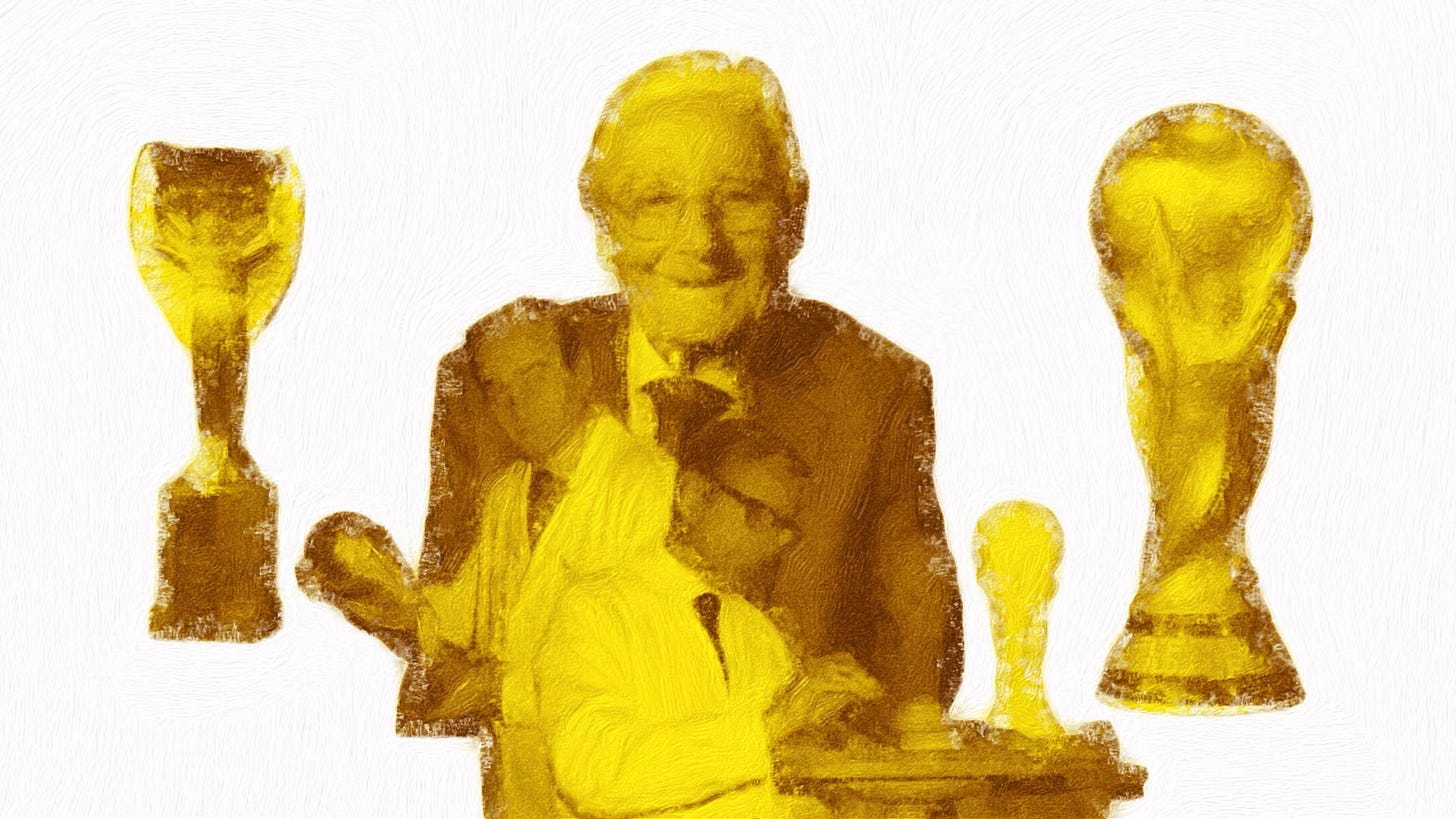Legacy, by Design
The story of the trophy that defined victory—and the man who brought it to life
The Club World Cup has always been a strange tournament. But this summer, it finally feels like something different. There’s a new format, new teams, a new trophy—and a somehow controversial competition that’s starting to feel like it actually matters. And for fans like me, it’s been a rare and almost unimaginable chance to see our clubs go up against European giants—something that, at best, usually only happens in friendlies.
At the same time, Between the one-year countdown to the 2026 World Cup and this new global competition, I started thinking about the one trophy that still sits at the top of the sport: the World Cup trophy. With all the changes happening around the game, I got curious about the most iconic trophy of them all—who created it, where it came from, and why it has remained untouched for over 50 years.
That story begins in a small workshop 45 minutes outside of Milan, in a town called Paderno Dugnano. That’s where Silvio Gazzaniga worked as the creative director for GDE Bertoni, a family-owned trophy company. In 1971, after Brazil’s third World Cup win earned them the right to keep the original Jules Rimet Cup permanently, FIFA launched a design contest for a new trophy. Gazzaniga was one of 53 artists from around Europe who submitted a proposal.
There was no real brief. No specific vision. Just a general set of dimensions and the understanding that the trophy had to reflect the importance of the event. So Gazzaniga started with a question: what does victory look like?
He believed that greatness wasn’t achieved alone. He saw victory as something shared—between teammates, nations, and generations. He called his concept “Uomo ingigantito dalla vittoria” — “Man transformed into a giant by victory.”
He built on the foundations of the Jules Rimet Cup’s design, which featured Nike, the Greek goddess of victory. But instead of mythological figures, he made humans the main characters. He shifted the focus from divine intervention to human effort—making the design feel more relatable and modern.
His concept was simple, but meaningful—built around three core ideas:
The world, the triumphant athlete, and the effort to win.
The sphere at the top represents the continents, the ball, and the universal value of soccer.
The human figures represent a man that victory has transformed into a giant, without taking on the role of a superhero.
The presence of two men in the design transforms a personal achievement into a moment of collective celebration.
The trophy wasn’t about glorifying an individual. It was about recognizing how people become extraordinary through effort, belief, and shared purpose.
And while most other submissions were just pencil sketches, Gazzaniga took his idea a step further. He built a life-sized plaster model by hand, sculpted on his kitchen table with help from his 14-year-old son. That decision gave him a clear edge—it allowed FIFA to visualize the concept in a tangible way, not just imagine it.
This, I think, is part of the reason why the design has lasted over 50 years without a single update. It’s not just visually striking—it carries meaning. It tells a story that goes beyond football: that the greatest moments in life aren’t achieved alone. They’re the product of years of work, of sacrifice, and of belief shared across many hands.
And maybe that’s the deeper message—not just about a trophy, but about how we define success.
Gazzaniga created something timeless—anchored in a truth we all recognize: the pull to contribute to something that’s larger than ourselves, something that outlasts us.
And when the things we create reflect that kind of meaning, speak to something deeper, and don’t just make an impression—they endure.
So maybe if we follow that instinct—to connect, to contribute, to build with purpose—we can create things that last. Maybe even something iconic!
That’s why the World Cup trophy still matters.
Because it’s not just a prize.
It’s a lasting icon.


